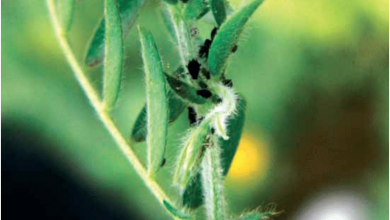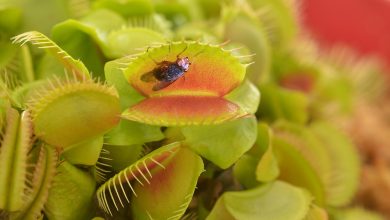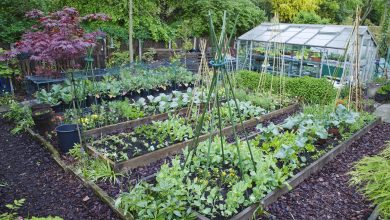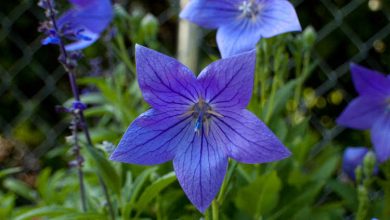White Spot on Leaves: [Identify and Eliminate]

On many occasions we receive emails or comments on our page saying the following: Help! A series of white spots have appeared on the leaves of my plants and I don’t know how to remove them. Can you help me?
Sometimes it builds up slowly, but other times it explodes overnight.
The flowers in your garden or the vegetables in your garden seem to be healthy and fruitful, and suddenly a white spot covers their leaves.
When your plants are affected by white powder, disease or insects are usually to blame. If you learn to identify the source of the white powder on your plants, you will be able to get rid of it and prevent it from coming back.
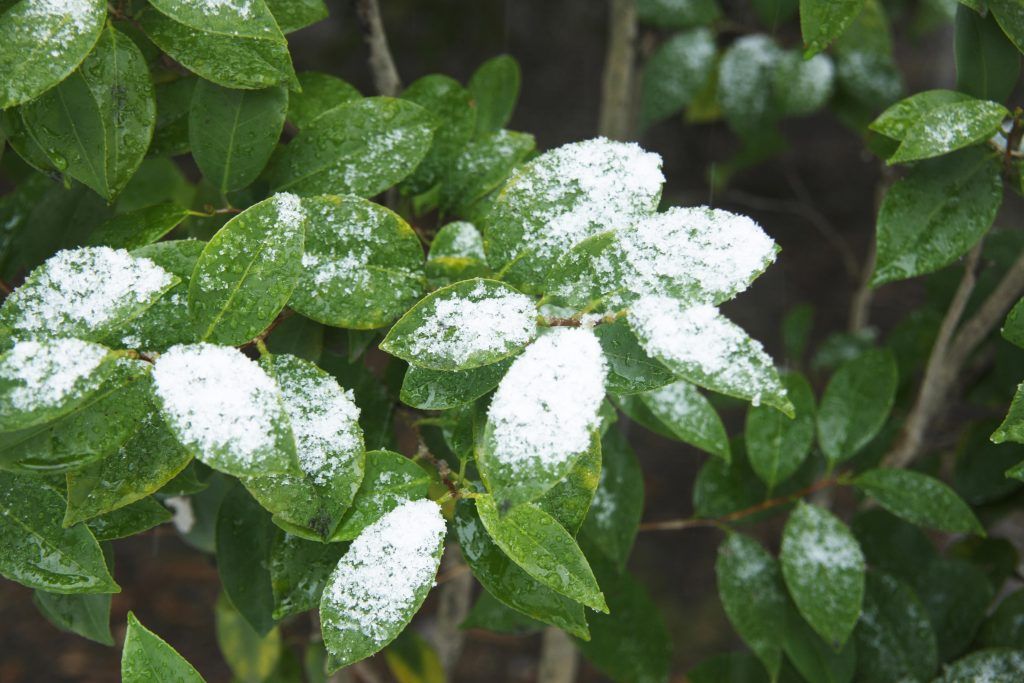
What are the most common causes of white spots?
White spots on the leaves of your plants can be caused by the following agents:
- Powdery mildew, mildew and other fungi (the most common).
- Excess of salts.
- Water potted plants with hard water.
- Cochineal.
- Spider mites, whitefly.
- Edema.
Throughout this article, we will delve into it and explain how you can prevent and/or cure this problem.
- To know more: How to learn to differentiate Oídio and Mildiu.

What symptoms does white spot give on your plants?
White spot disease gets its name from the circular white spots that spread across the leaves, stems, or pods of infected plants.
Older spots may develop dark edges and the centers may fall off. Such injuries look like gunshot holes.
In addition to turning yellow, severely affected leaves dry out and wilt, although they remain attached to the plants.
Stem lesions are superficial, with a clear boundary between diseased and healthy tissue. The lesions start out brown and then turn ash-gray to white. In the lesions a large number of small dark specks are formed, which are known as gray stalk.
Infected seed pods start out with small brown spots. They then expand and become grayish-white with dark spots inside.

What diseases cause white spots on your plants?
Diseases that cover leaves with white fuzz or powder affect many types of plants. If you closely inspect a white sheet and don’t see any insects, disease is likely the culprit.
Two common diseases cause a white, powdery coating on garden plants and crops:
powdery mildew
Powdery mildew is a fungal disease that covers leaves and stems with white powder.
Unlike many fungal diseases, powdery mildew attacks most strongly in hot, dry, shady conditions and high humidity.
Different types of powdery mildew affect several families of plants, but the white powder on the leaves of roses and tomatoes is usually of this origin.
Zucchini and cucumber leaves also suffer from powdery mildew. The white powder usually starts on the upper sides of plant leaves.

Mildew
Downy mildew is more closely related to algae than fungi, but closely resembles fungal diseases.
Unlike powdery mildew, downy mildew thrives in cool, humid climates, when leaves remain wet for a long time.
Overcrowded conditions favor its spread.
Vegetables like broccoli, cabbage, and cauliflower are frequent victims.
Pumpkins and cucumbers also suffer from mildew. White spots usually appear on the underside of the leaves, while yellow spots dot the tops of the leaves.

How do we control these diseases?
Focus on prevention and rapid intervention to deal with diseases that cause white powder in plants.
Once infections are active, they are more difficult to control.
The use of homemade fungicides is often helpful. Also avoid excess moisture on the leaves of your plants. Avoid watering by soaking the leaves and also puddle the soil.

What insects can cause white spot on leaves?
At first glance, all the white matter on your plant ‘s leaves looks like a disease.
But a closer look can show that the problem is something else and not fungal. Various types of insect pests leave white powder on plant leaves. There are three culprits that are common in houseplants and in gardens:
mealybugs
Mealybugs get their name from the white powder that covers their body.
They tend to gather in large groups that at first look like thick white mold. Mealybugs can reproduce without mating, so they multiply rapidly.
As they feed, they excrete honeydew which attracts ants, adding a sticky residue to the waxy powder. Mealybugs attack many plants, but citrus, fruit trees, and houseplants are frequent targets.

Cottony cushion scales commonly attack lemon and other citrus trees.
- To know more: Citrus diseases or lemon tree diseases.
Mealybugs are closely related to mealybugs and come in many different colors, including powdery white.
Female cottony mealybugs carry large cottony egg sacs, two to three times as long as the mealybug’s body. When they gather to feed, they look like cotton puffs wrapped in stems and leaves.
When the immature scales shed, they cover the foliage with white, cottony skins. These white, cottony flakes also produce large amounts of molasses.
White fly
Whiteflies are tiny, winged pests covered in a white, waxy powder.
Like their relatives the mealybugs, they reproduce rapidly.
The white powder on lemon leaves usually comes from these pests. Whiteflies accumulate on the undersides of leaves, creating a blanket of insects, silvery-white waxy debris and sticky honeydew.

If affected plants are gently shaken, the «white powder» takes flight. When shaking is stopped, the pests return.
Insects that look like white powdery deposits on plants and leaves can be tough.
Effective monitoring begins at the first sign of trouble, so don’t delay inspecting that white thing.
Neem oil or potassium spray soap are usually good tools to combat all these insects, including mealybugs, mealybugs and whiteflies.
- Tip: the use of pressure hoses also often works against whiteflies and other mites.
Plus, they continue to protect against this trio of pests for up to three months. Always take indoor plants outside to treat them. Let the plants dry well before going back inside.
Excess salt in my plants: could it be the problem?
Potted plants, such as jade plants, store water in their leaves.
These houseplants capture water when it rains and store it for use when needed. But rainwater captures salts from the air and soil as it falls.
When it comes to spraying the leaves with a saline solution, the trapped moisture passes through the leaves during transpiration, and now the evaporating moisture leaves the salt on the leaves of your potted plants.
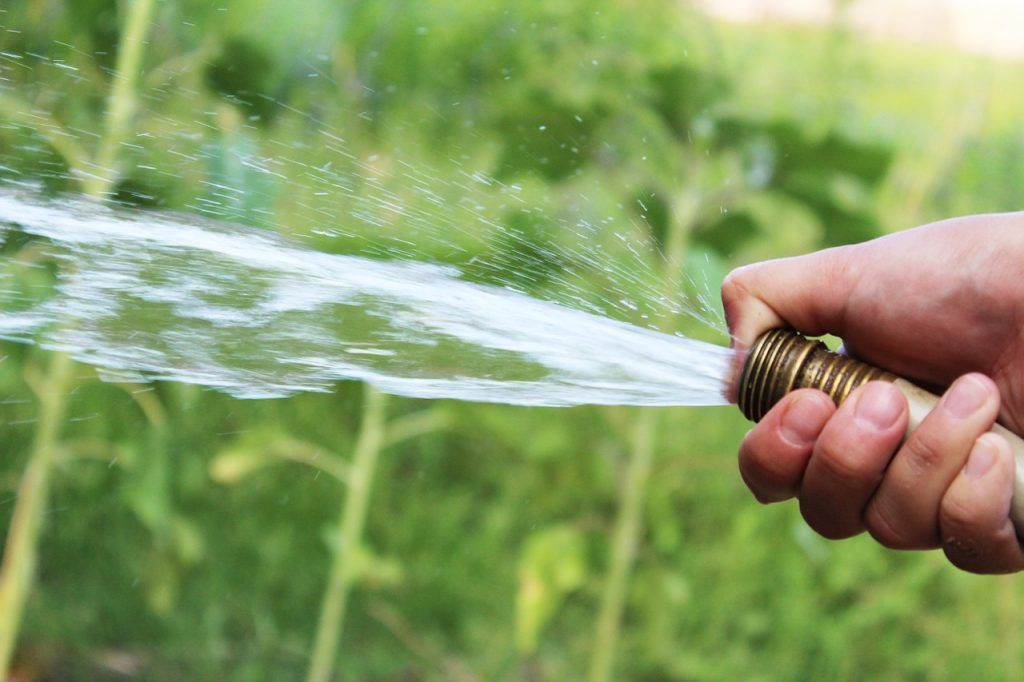
Solution: This is one of the main causes of white spots on the leaves of potted plants, and it is quite easy to rectify.
Dampen a soft cloth and use it to wipe off any white spots on the leaves.
In this way, the leaves of your potted plants will quickly recover their appearance. Since rainwater also hits the soil where your potted plant is located, you can repeatedly rinse the soil with water.
Remember that salt from the potted plant ‘s soil can come out through the leaves. In these cases, round white spots appear. If this occurs, repeatedly rinsing the soil is the best remedy, as it will help dilute the salt.
Edema problem in white leaf spots
Some houseplants are affected by a condition called edema.
Edema is a disease in which the roots absorb water faster than the plant can use it.
This disease can develop when leaf tissue is saturated with water, due to pressure from roots that continue to push water up the plant when there is little evaporation.
Edema is often influenced by the plant ‘s environment, for example when the soil is hot and moist and the air temperature is low. This also causes white spots to appear on the foliage of the leaves of some potted plants, such as the jade plant.

How can we prevent white spots on our plants?
Most plant disease and insect problems start long before we realize it.
Just like healthy people, healthy plants are less susceptible to insects and disease.
But when plants suffer from water stress or are malnourished, pests appear.
To help keep your plants free of unwelcome white spots, give them plenty of room for air and light to reach their leaves.
Try drip watering instead of overhead to keep leaves dry. Next, you feed your plants the nutrients they need for vigor and strength.
With proper plant care and nutrition, you can help keep your plants free from disease, insects, and the white matter that threatens to appear.

Can the white spot spread to other plants, flowers or trees in your garden?
Yes, it can infect other plants. In fact, it is usually a very contagious disease.
Its tiny spores can stick to hands, clothes, or even simply disperse into the air around it.
It spreads easily, so the best way to remove this nasty substance is to use scissors and cut off infected leaves. Make sure to throw them away and don’t leave them on the ground to spread to other plants.
Is there anything I can do to prevent my other plants from getting infected?
There are many commercial sprays and products found in a garden or agriculture store, but…
Did you know that one of the easiest remedies can be found in your kitchen?
Mix a two liters of water and a tablespoon of baking soda.
Spray this combination on your plants together and hose down. Use once a week to keep your sheets fresh and clean and help keep white spots at bay.
What if I’m not sure it’s the white spots that are the problem?
What if I’m not sure that’s the problem? Can I take it to be seen by professionals?
Most garden centers will be happy to identify your problem, but be sure to put it in a plastic bag so it doesn’t contaminate any plants on hand.
Otherwise, they may get angry.
Bibliography and references
-
Characterization of the white spot of garlic (Allium sativum Lin) and measures to mitigate its impact…, Agrarian University of Havana – 2001 – sidalc.net
-
Oidium.., A Sartorato – Zimmermann, MJ DE O.; Rock, M.; Yamada, T.(eds.) …, 1988 – sidalc.net
-
[PDF] Leaf rust and powdery mildew of wheat and barley, S Germán, M Díaz, S Pereyra, M Castro – Technical Conference Crops of …, 2005 – inia.org.uy
-
[HTML] Powdery mildew in cucurbits, N González Morejón, B Martínez Coca… – Revista de Protección…, 2010 – scielo.sld.cu
-
[PDF] MILDIU , ANDEAN LINK – portalfruticola.storage.googleapis …
-
White Spot Disease, J Cuéllar-Anjel – 2013 – lib.dr.iastate.edu
-
[BOOK] Pests and diseases of garden plants, S Buczacki – 1999 – books.google.com

